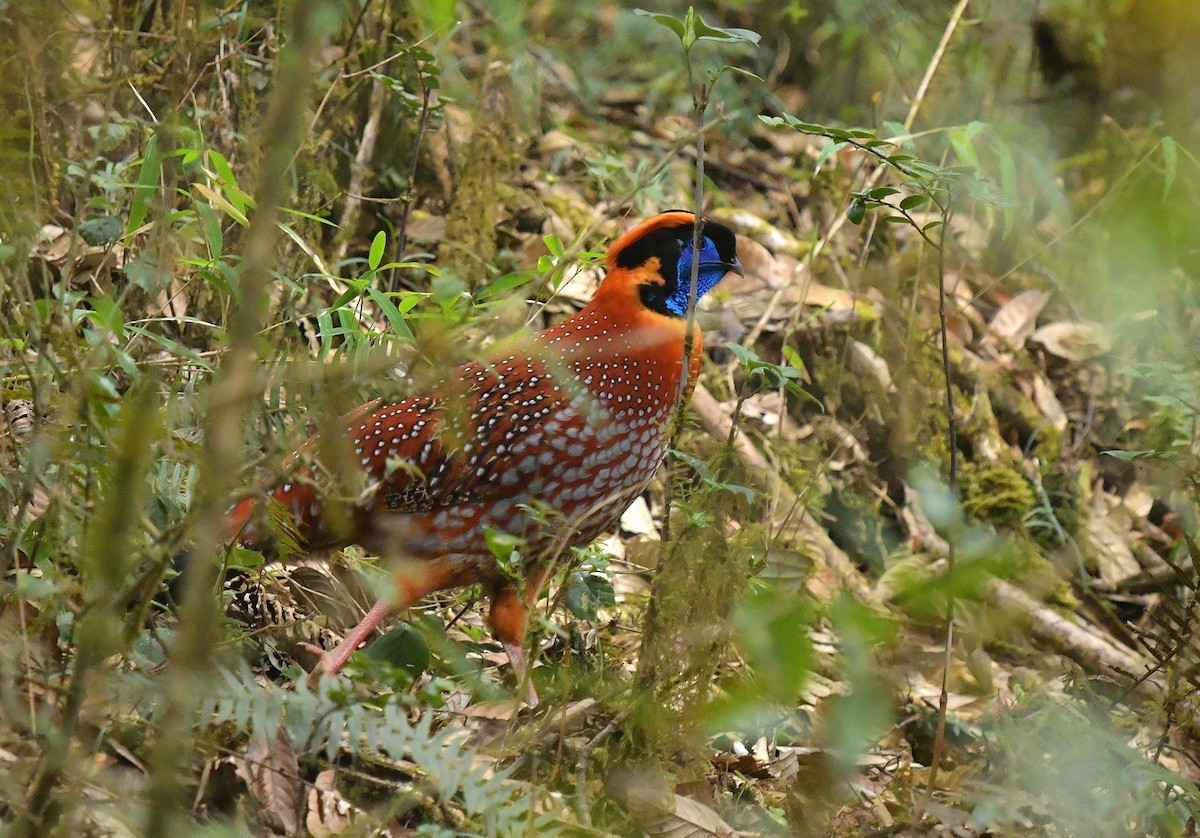Temminck's Tragopan
A species of Tragopans Scientific name : Tragopan temminckii Genus : Tragopans
Temminck's Tragopan, A species of Tragopans
Botanical name: Tragopan temminckii
Genus: Tragopans
Content
Description General Info
 Photo By Rofikul Islam
Photo By Rofikul Islam Description
Temminck's tragopan (Tragopan temminckii) is a medium-sized, approximately 64 cm long, pheasant in the genus Tragopan. The male is a stocky red-and-orange bird with white-spotted plumage, black bill and pink legs. He has a bare blue facial skin, inflatable dark-blue lappet and horns. To the female, she is white-spotted brown with blue circular eye skin. Its appearance resembles the satyr tragopan, but unlike the latter species it has all red upperbody plumage and orange collar. The diet consists mainly of berries, grass and plants. The Temminck's tragopan is found across the mountains of far northeast India, central China, far northern Myanmar to northwestern Tonkin. Widespread and a common species throughout its large habitat range, the Temminck's tragopan is evaluated as Least Concern on the IUCN Red List of Threatened Species. This bird's common name and Latin binomial commemorate the Dutch naturalist Coenraad Jacob Temminck. 
Size
64 cm
Nest Placement
Ground
Feeding Habits
Temminck's Tragopan forages for a variety of plant-based foods including flowers, leaves, and berries, and occasionally consumes insects. Feeding behavior includes digging in snow for vegetation in winter and eating fruits from trees like rowan and Viburnum. It has a particular preference for certain berries, making up a significant part of its diet.
Habitat
Temminck's Tragopan thrives in dense evergreen or mixed forests, abundant in species like Sorbus and Viburnum, with bamboo and rhododendron underbrush. Their seasonal habitats range from richly vegetated forest edges to areas with a profusion of seasonal fruits and denser broadleaf-bamboo forests in winter, indicating a preference for varied environmental conditions within these forests.
Dite type
Omnivorous
General Info
Feeding Habits
Bird food type

 Photo By Rofikul Islam
Photo By Rofikul Islam